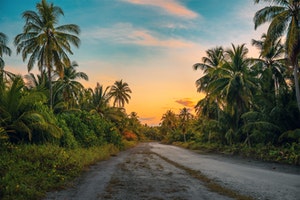Foraged forest plants feed many Zambians in the dry season
31 January 2019

Forests in southern Zambia threatened by continuing deforestation are quietly growing a wild edible plant critical to the diet of 96% of rural people, new research has shown.
Local people have foraged for lusala, a wild forest-grown yam, for generations, but a new report published in Economic Botany from the University of Reading, UK, has uncovered for the first time the vast scale on which these tubers are harvested, eaten and sold. Without access to lusala, hundreds of thousands of households would face food shortages in the dry season and be driven further into poverty, the researchers say.
Donald Zulu, the University of Reading PhD student funded by the Commonwealth Scholarship Commission, who led the study said:
“This detailed analysis has uncovered for the first time the extraordinary scale and societal importance of gathering lusala from forests.”
“It provides sharp evidence of the tubers’ value to Zambians, and shows another major element of the value of our forests, and the need for sustainable management of forests as public assets to conserve these valuable natural resources and to sustain rural communities.”
More than four out of five (83%) rural families surveyed said that they gather the tubers from forests, walking for between 30 minutes and two hours to areas where they grow. Most of them said that gathering lusala was also a significant income generator: around three in five (59%) sell lusala to both their immediate communities and to urban areas. This boosts household income in the dry season - and also the livelihoods of market traders.
Deforestation in Zambia is high, with between 250,000 and 300,000 hectares of forest being destroyed each year. This loss is largely driven by charcoal production, fuel wood collection, and conversion to farmland.
While the deforestation was a cause of concern for wildlife conservation and efforts to prevent climate change and soil erosion, its value as a source of food and income for local communities had previously been neglected.
Professor Richard Ellis from the University of Reading said:
“This wild plant was a hidden component of the diet and economy of southern Zambia until now. It is just one component of the regions’ natural biodiversity and our research is just a small illustration of the difficulty in estimating the total value of natural forests to local people – and to nations - accurately.
“Our study has identified a previously-unrecognised contribution to the quality of life of several million people in central, southern, and western Zambia. Now that it has been identified, this wild edible plant and its habitat need to be protected in a manner that enables sustainable foraging by local people to continue.”
Full citation: Zulu, D., Ellis, R.H. & Culham, A. Econ Bot (2019). https://doi.org/10.1007/s12231-018-9433-3
